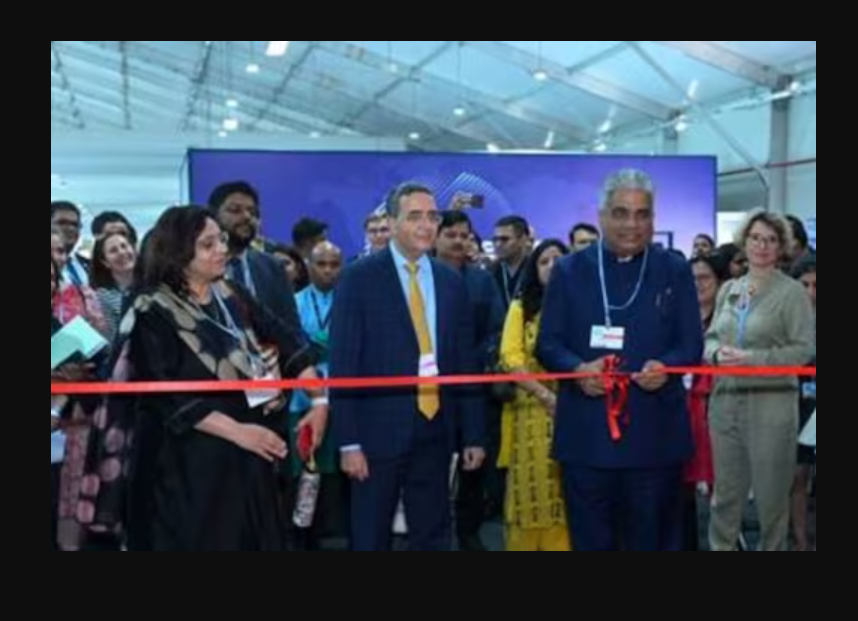At the high-level round table, environment minister Bhupender Yadav drew attention to India’s vulnerability to climate change, and stressed how early warning has helped bring down the number of deaths from cyclones by 90% in last 15 years
A$3.1 billion action plan for ‘Early Warnings for All’ was launched at the United Nations’ Climate Summit — COP27 — on Monday, with a statement of support from as many as 50 nations including India. The plan envisaged by the World Meteorological Organisation (WMO) aims to reach everyone on earth with early warnings against extreme weather events.
Addressing the UN Secretary-General-High-Level Round Table, environment minister Bhupender Yadav, who is leading the Indian delegation, drew attention to India’s high vulnerability to climate change, and said it fully supports the UN’s agenda to achieve ‘Early Warnings for All’.
EARLY WARNING SYSTEM IN INDIA
“The most vulnerable regions are located between the tropics of Cancer and Capricorn. Much of the developing world, including India, lies between these tropics. Public expenditures and loss of revenues following the onset of external disasters have already begun to rise in this region with the least coping capacity,” Yadav said.
With a vast coastline, India has always been vulnerable to tropical cyclones, which have claimed as many as 909 lives from 2010 to 2021 as per a report tabled in Parliament early this year. Over the last two decades, the frequency of severe cyclones during the post-monsoon season has also increased significantly in the North Indian Ocean leading to more destruction, while as rapid intensification of these storms posing a key challenge for the forecasters.
Yadav said India has been working to strengthen its end-to-end early warning systems for all hydro-meteorological hazards. He said the country has “reduced mortality from cyclones by up to 90% over the last 15 years”, and is making progress in providing early warning for other hazards like heatwaves.
“On both east and west coasts, we have nearly 100% coverage of early warning systems for cyclones… The meteorological data of satellite and radar, and model guidance from IMD has helped the countries to minimise losses of lives due to tropical cyclones during the last 10 years, not only in India but also in all the countries in the Bay of Bengal and Arabian Sea region for which IMD provides tropical cyclone forecast and advisories,” he said.
WHAT’S THE ACTION PLAN?
At present, half of the countries across the globe are still without any early warning systems and even fewer have regulatory frameworks to link early warnings to emergency plans, which includes most of the least developed countries. The Action Plan aims to address these gaps.
Out of the estimated new targeted investments of $3.1 billion required over the five years, $374 million would be used to conduct risk assessment on hazards and vulnerabilities, $1.18 billion to develop hazard monitoring and early warning services. As much as $1 billion would be used to build national and community response capabilities, and $550million for communicating risk information so it reaches all those who need it.
BUT…. CLIMATE FINANCE STILL A MIRAGE
India has been urging the rich and developed countries to fulfil their commitment in terms of climate finance, technology transfer and strengthening the capacity of poor and developing countries to combat climate change.
Raising the issue at the round table on Monday, the Union minister said with climate finance still scarce, climate adaptation in the form of early warning dissemination is key in safeguarding lives, and livelihoods. India also drew attention to the formation of Coalition of Disaster Resilience Infrastructure (CDR) by Prime Minister Narendra Modi at the 2019 UN Climate Action Summit with a with a focus on developing applications for climate forecast and early warning for reducing losses. The CDRI’s Membership has now expanded to include 31 countries and eight member organisations, with a growing footprint in Africa region, said the minister.
Yadav also reiterated India’s commitment towards clean and green energy source and National Hydrogen Mission, at the Middle East Green Initiative Summit being organised on the sidelines of COP27.
Leaders and representatives from as many as 100 nations are attending the 27th Conference of Parties (COP) of the UNFCC that started on November 6 and is set to conclude on November 18 in Egypt. The India Pavilion at COP27 is focussed on ‘LiFE – Lifestyle for Environment’, the theme championed by PM Modi for simple and sustainable lifestyle.
Article Credits: News 18

Pingback: Cop27: India harps on LiFE, not issues - SLSV - A global media & CSR consultancy network
Pingback: How market-based sustainability standards can help protect the planet - SLSV - A global media & CSR consultancy network